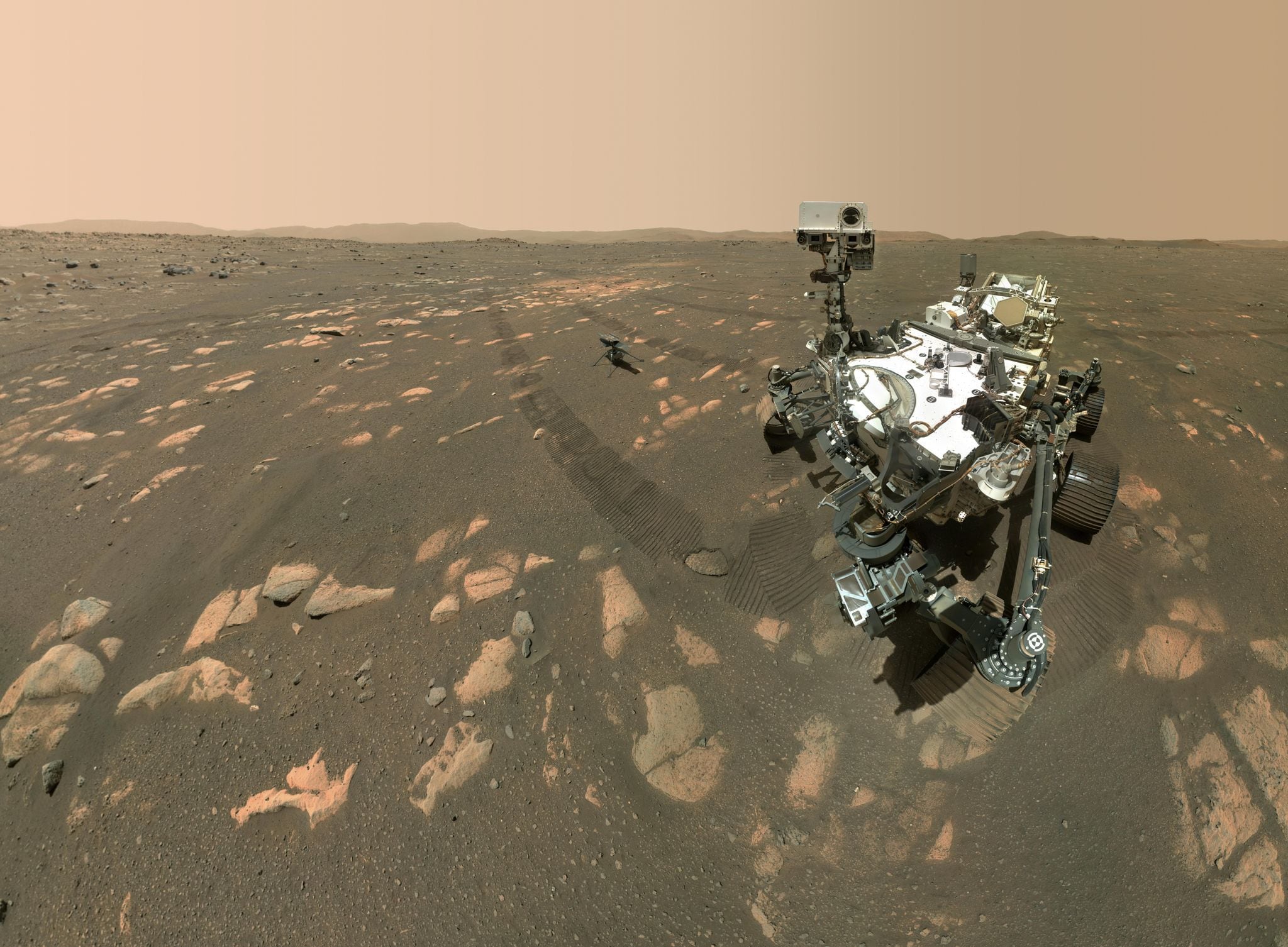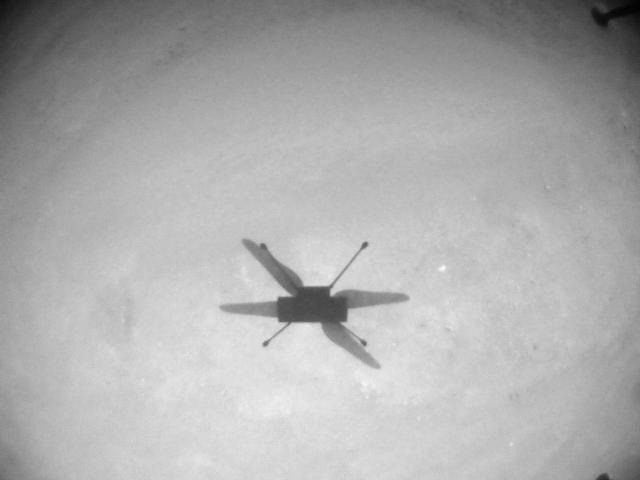:quality(85)/cloudfront-us-east-1.images.arcpublishing.com/infobae/GX2I5QEI6JCILGPK5ZGYXYZMWA.jpg 420w)
Ingenuity, a helicopter weighing only 1,800 grams, wrote a year ago a page in the history of space exploration when flying for the first time on another planet. His five planned flights on Mars have multiplied: there are already 25. And it has become the aerial eyes of the Perseverace rover.
On April 19, 2021, the solar-powered helicopter rose to three meters, held hover for 30 seconds, and again touched the surface. In total 39.1 seconds of flight.
“What a spectacular thing,” NASA systems engineer Elio Morillo told Efe about that day, who “had the great privilege of sending the command that woke up the helicopter on the day of its first flight.”
A year later, the drone made 25 flights, with a total of 46.5 minutes in the air to travel 5,824 meters, with a maximum height of twelve meters, on a mission that was intended only as a technological demonstration that you could fly on Mars, but that has gone much further.
Ingenuity had arrived at the Jezero crater on Mars, just two months earlier in the gut of Perseverance, which travels the planet with the main objective of searching for traces of life.
Morillo, who was involved in the first 30 days of the mission, explained that, after the five scheduled flights, the helicopter would have been left behind, while Perseverance continued on its way, as it was thought that “it would be unable to keep up with its pace”.

But, with each flight, they have learned that it can follow the rover, maintain communication with it, charge its batteries, spend the frosty nights without being damaged. Little by little they have widened the limits to “fly farther, faster, take pictures and add to the scientific value of the mission”.
In fact, Ingenuity has become a kind of helper. “We no longer have to send Perseverance somewhere that could possibly be dangerous, such as sandy ground where its wheels can fit.”
The helicopter goes and takes photos, which help scientists understand the geochemical components of an area, without “worrying about whether Perserverance has to arrive or not,” said Morillo, who is currently in charge of tracking and analyzing information from the rover's engines.
Ingenuity opens up the possibility that, “in five or ten years”, instead of a rover, a series of drones can be sent to Mars with different scientific instruments, this one is only provided with cameras.
Flying on Mars is not easy, because the pressure of the atmosphere on the surface is only 1% of that of the Earth's, so its two pairs of blades, placed one on the other, have to rotate very fast, at 2,537 revolutions per minute.
But tests had already been done on Earth, so “we had the confidence and certainty that we could achieve it”, although before that moment we had to overcome others of “nerves” and even “scary”, he said.

The first to make sure, with a series of tests, that the helicopter had not suffered any damage during the journey and separation from Perseverance.
The second focused on the first night that Ingenuity had to pass away from the rover's protection, which provides it with heat so that its battery does not freeze. Tests had also been done on Earth, but the environment on Mars is “very uncertain”.
“Once we survived that first night we said: ok this can be achieved” and when it flew they knew that NASA's Mars 2020 mission was going to be “spectacular from then on”.
Even so, Ingenuity has had to face some problem, such as when its release in the Martian atmosphere was postponed due to a software problem that had to be solved on Earth, or a recent sandstorm that left dust on its rotors and that was also solved.
Planned for a 30-day mission, it has been in service for a year now and Morillo expects it to last “much longer”, although they are well aware of certain mechanical limits in their thin legs that, at “some point, they may bend and break, because they are not designed to last that long”.
NASA compared Ingenuity's flight to the feat achieved in 1903 by the Wright brothers, who made the first motor flight. Morillo recalled that the helicopter carries under its rotors a small piece of cloth from that plane, which for the team was “a complete honor”.
(with information from EFE)
KEEP READING:
